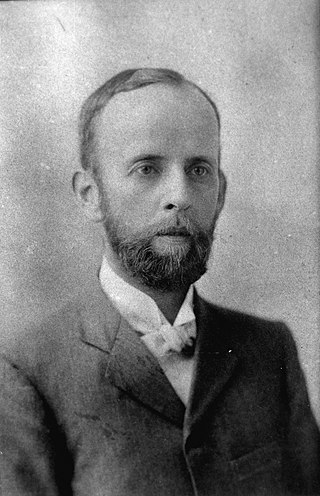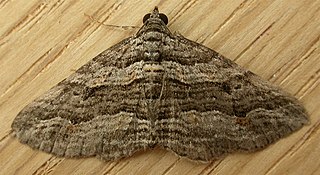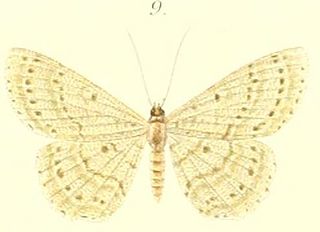
Bookworm is a general name for any insect that is said to bore through books.

Larentiinae is a subfamily of moths containing roughly 5,800 species that occur mostly in the temperate regions of the world. They are generally considered a subfamily of the geometer moth family (Geometridae) and are divided into a few large or good-sized tribes, and numerous very small or even monotypic ones which might not always be valid. Well-known members are the "pug moths" of the Eupitheciini and the "carpets", mainly of the Cidariini and Xanthorhoini. The subfamily was described by Philogène Auguste Joseph Duponchel in 1845.

The Cidariini are the largest tribe of geometer moths in the subfamily Larentiinae. The Cidariini include many of the species known as "carpets" or, ambiguously, "carpet moths", and are among the few geometer moths that have been subject to fairly comprehensive cladistic study of their phylogeny. The tribe was described by Philogène Auguste Joseph Duponchel in 1845.

Alfred Jefferis Turner was a pediatrician and amateur entomologist. He was the son of missionary Frederick Storrs-Turner. He introduced the use of diphtheria antitoxin to Australia in 1895. He resided in Dauphin Terrace, Highgate Hill, Brisbane, and was known by the nickname "Gentle Annie".

Hypatima is a genus of the twirler moth family (Gelechiidae). Among these, it belongs to a distinct lineage, which is variously treated as tribe Chelariini in subfamilies Dichomeridinae, Gelechiinae, or even Pexicopiinae, and historically was considered a subfamily in its own right, Chelariinae. Of this lineage, Hypatima – under its junior synonym Chelaria – is the type genus. This genus has numerous species, but its exact limits are not quite clear. This genus occurs mainly in the Southern Hemisphere, though one of the better-known species is the only member of this genus native to Europe, the lobster-clawed moth.

Thera is a genus of moths of the family Geometridae erected by James Francis Stephens in 1831.

Chrysolarentia severata is a species of Larentiinae that occurs in Australia.

Chrysolarentia subrectaria is a species of moth of the family Geometridae. It is found in New Zealand and Australia, including Tasmania.

Euproctis is a genus of tussock moths in the family Erebidae described by Jacob Hübner in 1819. Species are cosmopolitan, widespread throughout Palearctic, African, Oriental and Australian regions. Molecular phylogenetic studies indicate that the genus as presently understood comprises a large number of unrelated lineages, only a few of which have names, and is therefore in serious need of revision.

Iropoca is a monotypic moth genus in the subfamily Lymantriinae erected by Alfred Jefferis Turner in 1904. Its only species, Iropoca rotundata, the iropoca moth, was first described by Francis Walker in 1855. It is found in the Australian states of Victoria, New South Wales and Queensland.

Chrysolarentia is a genus of moths in the family Geometridae erected by Arthur Gardiner Butler in 1882. It is mainly found in Australia with one species found also in New Zealand.
Homospora is a monotypic moth genus in the family Geometridae described by Turner in 1904. Its only species, Homospora rhodoscopa, was first described by Oswald Bertram Lower in 1902. It is found in Australia.

Scotocyma is a genus of moths in the family Geometridae described by Turner in 1904. All the species in this genus are found in Australia.

Taxeotis is a genus of moths in the family Geometridae described by Edward Guest in 1887. All the species in this genus are found in Australia.

Chrysolarentia plagiocausta, the black-lined carpet, is a moth of the family Geometridae first described by Alfred Jefferis Turner in 1904. It is found in the Australian Capital Territory, Tasmania and Victoria.

Xanthorhoini is a tribe of geometer moths under subfamily Larentiinae. The tribe was described by Pierce in 1914.
Gymnoscelis lophopus is a moth in the family Geometridae. It was described Turner in 1904. It is found in Queensland, Australia.

Catoria delectaria is a moth of the family Geometridae. It is found in Australia (Queensland).

Procometis is a genus of moths in the family Autostichidae.
This page is based on this
Wikipedia article Text is available under the
CC BY-SA 4.0 license; additional terms may apply.
Images, videos and audio are available under their respective licenses.

















